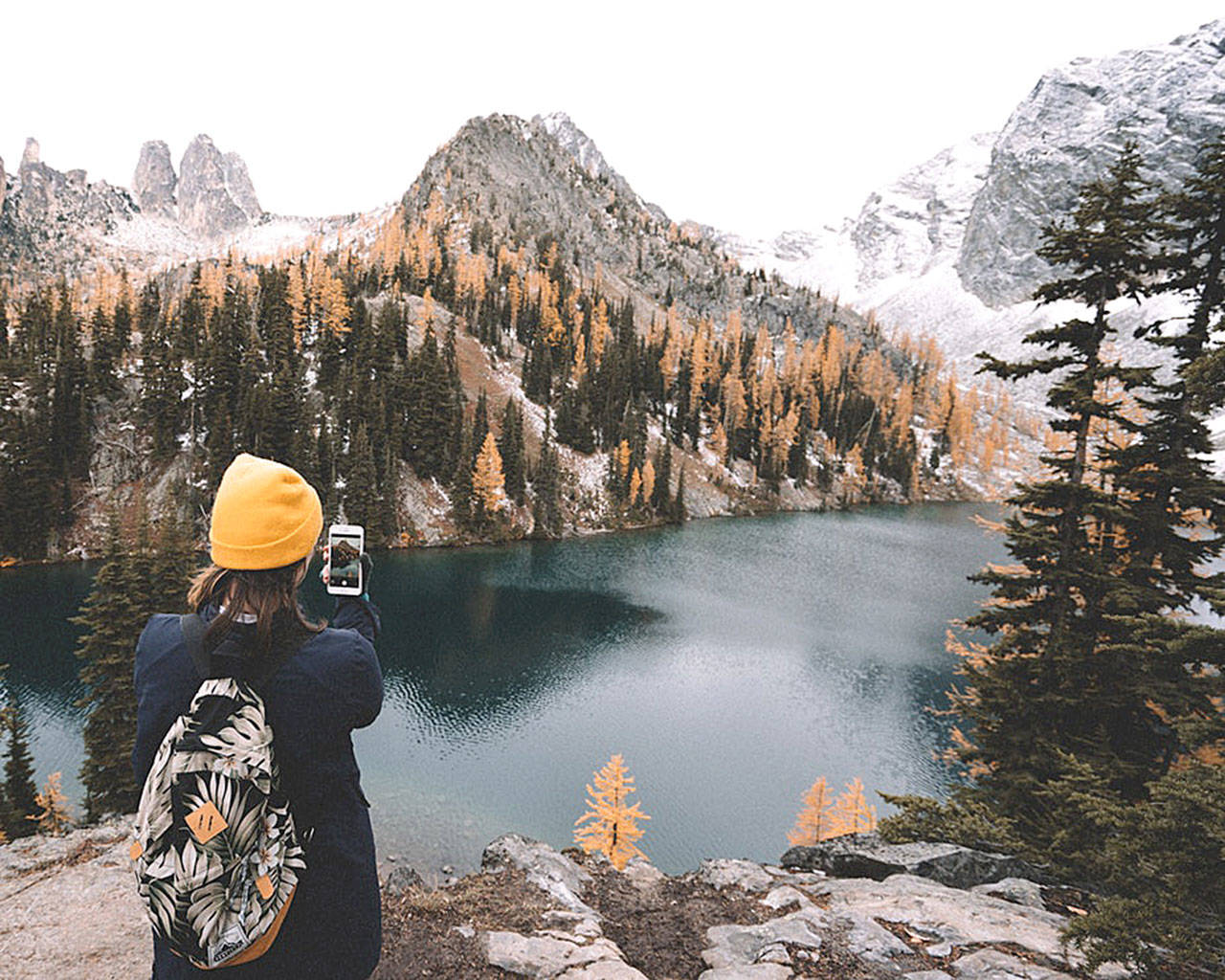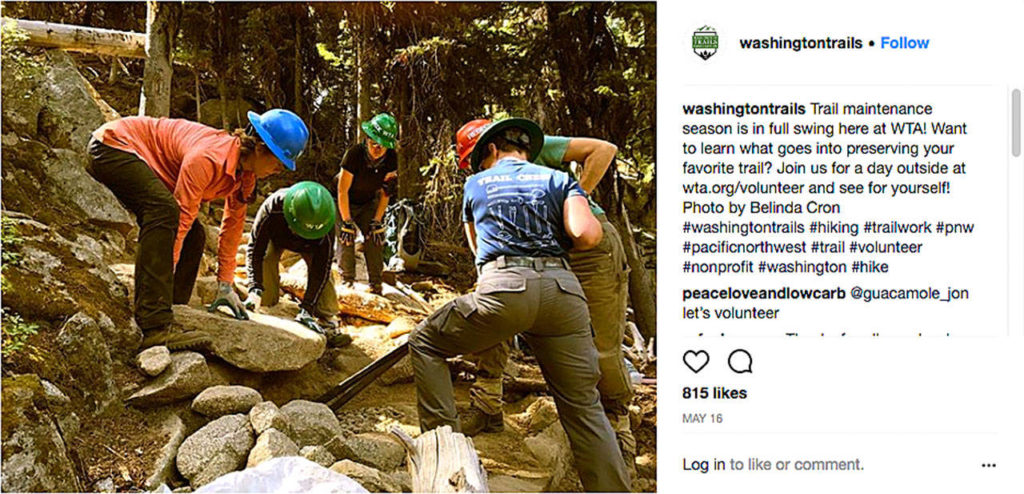By Erik Haugen-Goodman / Washington Trails Association
Social media plays a big role in many people’s lives, and it’s only natural that our love of sharing would extend to the outdoors. As more and more hikers are enjoying trails, it’s important to remember that social media can have an impact on how good hiking behavior is shared in the hiking community.
This week, the national Leave No Trace Center for Outdoor Ethics released a set of guidelines with tips on how to promote positive hiking behavior on social media platforms like Facebook, Instagram and Twitter to ensure that the trails we all love to hike on will be kept in good condition.
The Leave No Trace guidelines include:
Tag your photos thoughtfully. Consider the implications of sharing popular trails that see a lot of use.
Be mindful of the images you share. What story is your photo telling? Is it sharing positive behavior?
Give back. Help the organizations and causes that can help trails and the outdoors. Consider giving back by volunteering or looking into stewardship opportunities.
Encourage Leave No Trace ethics. Talk about and show the benefits of keeping the outdoors and trails in good condition by picking up trash and adhering to the Leave No Trace principles.
An ongoing conversation
The idea of using social media responsibly is something the outdoors and hiking community has been thinking about for a while here. Last week, Washington Trails Association’s communications director, Kindra Ramos, sat down with Olympic National Park’s Chief Ranger, Jay Shields, to talk about the impacts social media can have on the outdoors on KUOW radio.
“Social media can inspire more people to get outdoors,” Ramos said. “But inspiration is a first step toward meaningful stewardship.”
Tips for tagging and locations
Here at Washington Trails Association, one of our goals is to make public lands accessible to all, to help hikers connect with the more than 5,000 trails on public lands across the state.
On our own social media channels, we generally try to name the trail, park or forest where a photo was taken. But we also recognize that some well-known trails, fragile places (or trails with limited capacity for parking or boot traffic) can suffer from out-sized social media attention. So, in peak hiking season, we avoid recommending or sharing photos from popular trails.
When it comes to tagging in your own posts, consider that there are potential impacts of your share.
If you visit a fragile backcountry environment, consider the implications of leaving an exact geo-targeted location on your social media posts, as that may encourage a larger number of people to visit an area not intended for heavy use.
If you’re on a popular trail, consider showcasing how to treat and navigate well-traveled trails so other hikers can understand the implications of hiking in some of the more popular areas in Washington. For example, point out how cutting switchbacks can damage plant life, etc.
Stewardship through photos
Setting a good example in your photos will do a lot to spread good trail behavior. Consider that the images you share could be seen by a large number of people. You can have a big impact on how the outdoors are viewed.
Ensure that you’re showing your camp in designated sites and at least 200 feet from water sources.
Show hikers staying on the trail, and even picking up trash to help promote positive habits in the outdoors.
No matter how cute a face they have or how much they beg, a sweet shot on your phone isn’t a reason to feed or approach wildlife too closely. Use a zoom lens to capture wildlife from a safe distance. This not only keeps you safe, but doesn’t disrupt the animals in their natural habitat.
Giving back
Encouraging positive hiking behavior on social media is a great way to spread the word. When you’re ready to take the next step, consider volunteering with us (or another awesome outdoor-oriented nonprofit) to give back even more.
Volunteering not only helps other hikers and the trails themselves, but also will help you build a strong connection to our public lands.
Leave no trace
The Leave No Trace principles are a great guide to lessening your impact on our wild spaces and trails. Practice these both on-trail and in the posts you share on social media. Encourage others to join you in caring for the outdoors.
The Washington Trails Association promotes hiking as a way to inspire people to protect Washington’s natural places through collaboration, education, advocacy and volunteer trail maintenance. Get inspired to go hiking and learn how you can help protect trails at www.wta.org.
Talk to us
> Give us your news tips.
> Send us a letter to the editor.
> More Herald contact information.


























